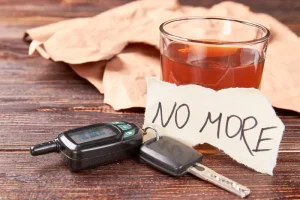
While detox diets have a seductive appeal, your body is fully equipped to handle toxins and other unwanted substances. However, popular detox diets rarely identify the specific toxins they aim to remove or the mechanism by which they supposedly eliminate them. However, the body “detoxifies” how to flush alcohol out of your system itself naturally and doesn’t actually require special diets or expensive supplements to eliminate toxins. The acute phase of alcohol detox can last anywhere from 6 hours to 2 weeks. When you are changing your drinking behaviors, it is common to have cravings or urges to drink alcohol.
Detoxing Your Liver: Fact Versus Fiction

Consequently, this unhealthy shift in bacteria can weaken your immune and detoxification systems and increase your risk of disease and inflammation (46). While observational studies have shown that low to moderate alcohol consumption benefits heart health, excessive drinking can cause many health problems (6, 7, 8). It typically implies following a specific diet or using special products that claim to rid your body of toxins, thereby improving health and promoting weight loss. A full-body detox typically involves following a diet to remove toxins from the body. However, your body is well-equipped to eliminate these harmful substances without dietary intervention or supplementation. Alcohol can be detected in blood for up to 12 hours after the last drink.
- You may be underestimating how much you drink because you (or your generous friend) aren’t using standard measurements.
- This is because women’s bodies generally have less water than men’s.
- A late night of partying and consuming alcohol can have a detrimental effect on your body.
- It is a particularly dangerous condition because, unlike illegal street drugs or prescription drugs, alcohol is legal, easily available, and socially acceptable.
- Keep trying until you find the activities that resonate with your passions and ultimate wellness goals.
- In severe cases, it might result in high blood pressure and a slowed heart rate.
How long does it take for alcohol to get out of your liver?

Drinking plenty of water can also help people stay hydrated when consuming alcohol. Fasting is one way to clean out the body and also give it a chance to self-heal. There are many ways to fast, but focusing on the liver, kidneys and skin is one of the best ways to detoxify the body. Many alcohol treatment centers incorporate a fast into their programs. Now that you know that a medical detox is the best way to get rid of all traces of alcohol from your body, you might be wondering how to enroll in an alcohol detox program. Look no further because ChoicePoint offers inpatient and outpatient alcohol detox programs in NJ for alcohol and drug addiction.
Stages of Alcohol Detox: A Timeline of What Happens to Your Body

If you have concerns about alcohol consumption or its effects on your health, it’s advisable to seek professional guidance. Schedule an appointment or call us and a Ria Health team member can help. For anyone with a family history of alcohol use disorder, there is a higher risk of also developing the condition. For those people, it may be wise to avoid consuming alcohol altogether.

Increase Your Water Intake
It is a particularly dangerous condition because, unlike illegal street drugs or prescription drugs, alcohol is legal, easily available, and socially acceptable. This makes it harder for people to realize that their drinking patterns are problematic. Yet, alcohol is highly addictive and can cause severe health problems. Exercise influences alcohol metabolism by stimulating various physiological processes that assist in breaking down and eliminating alcohol from your system more efficiently. When you work out, your body’s metabolic rate increases, leading to faster processing of substances like alcohol.
Myth #2: Liver cleanses are a safe and healthy way to lose weight.
- Now that you know that a medical detox is the best way to get rid of all traces of alcohol from your body, you might be wondering how to enroll in an alcohol detox program.
- Your body flushes the alcohol out of your system steadily but slowly.
- People who use other illegal drugs in addition to alcohol typically experience more severe withdrawal symptoms.
- Yet, only about 7.6% of people with AUD receive treatment for their alcohol addiction.
While there are several mechanisms behind the health benefits of exercise, reduced inflammation is a key point (55, 56). That’s because when you consume too much salt and not enough water, your body releases an antidiuretic hormone that prevents you from urinating and therefore, detoxifying (48). If you have difficulties staying or falling asleep at night, lifestyle changes like sticking to a sleep schedule and limiting blue light before bed are useful for improving sleep (19, 20, 21).
Myth #3: You cannot protect yourself against liver disease.
- An electrolyte drink will help your body hold the fluids and rehydrate faster.
- As a matter of fact, there are two toxins in alcohol the body has to work hard to eliminate.
- However, every person is different and the severity of the withdrawal symptoms can vary from person to person depending on the extent of alcohol use and the person’s underlying health status.
The related services can also be called “withdrawal management” and there are many types of detox depending on an individual’s history, alcohol use, and symptom severity. Alcohol is a toxin, so your body prioritizes breaking it down to eliminate it quickly. The liver produces enzymes like alcohol dehydrogenase to convert alcohol into acetaldehyde and then into acetate. These byproducts are eventually broken down further into water and carbon dioxide for elimination from your body.
With sleep deprivation, your body does not have time to perform those functions, so toxins can build up and affect several aspects of health (15). Limiting or abstaining entirely from alcohol is one of the best ways to keep your body’s detoxification system running strong. Excessive drinking can severely damage your liver function by causing fat buildup, inflammation, and scarring (9).
